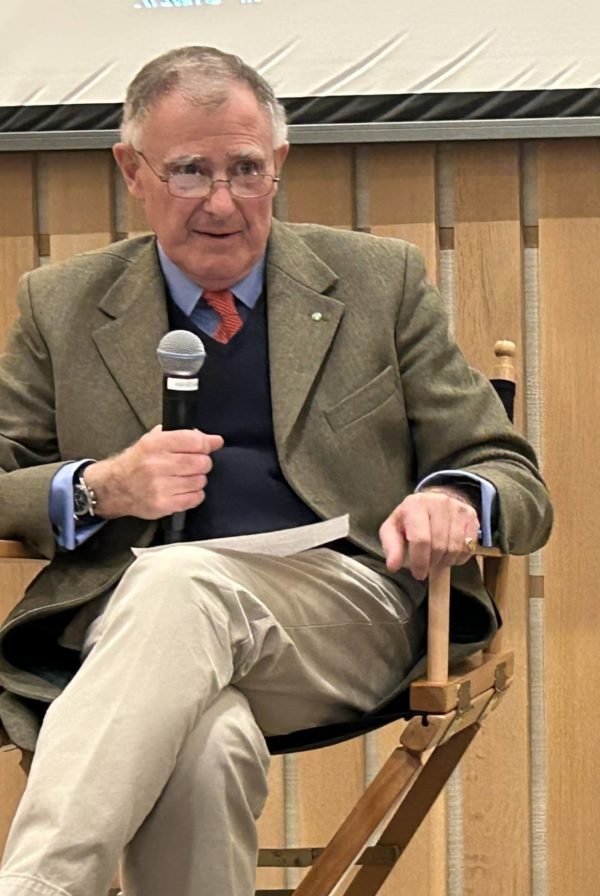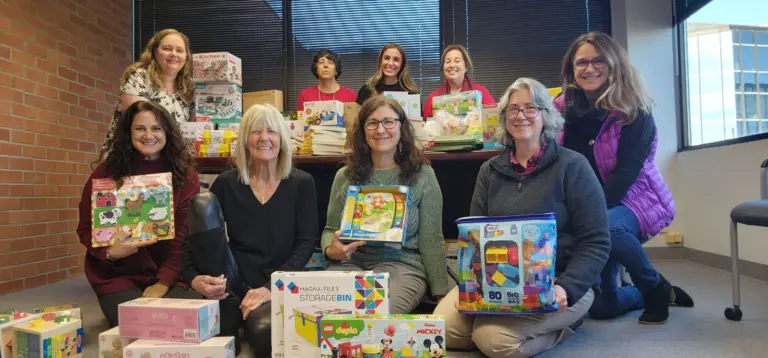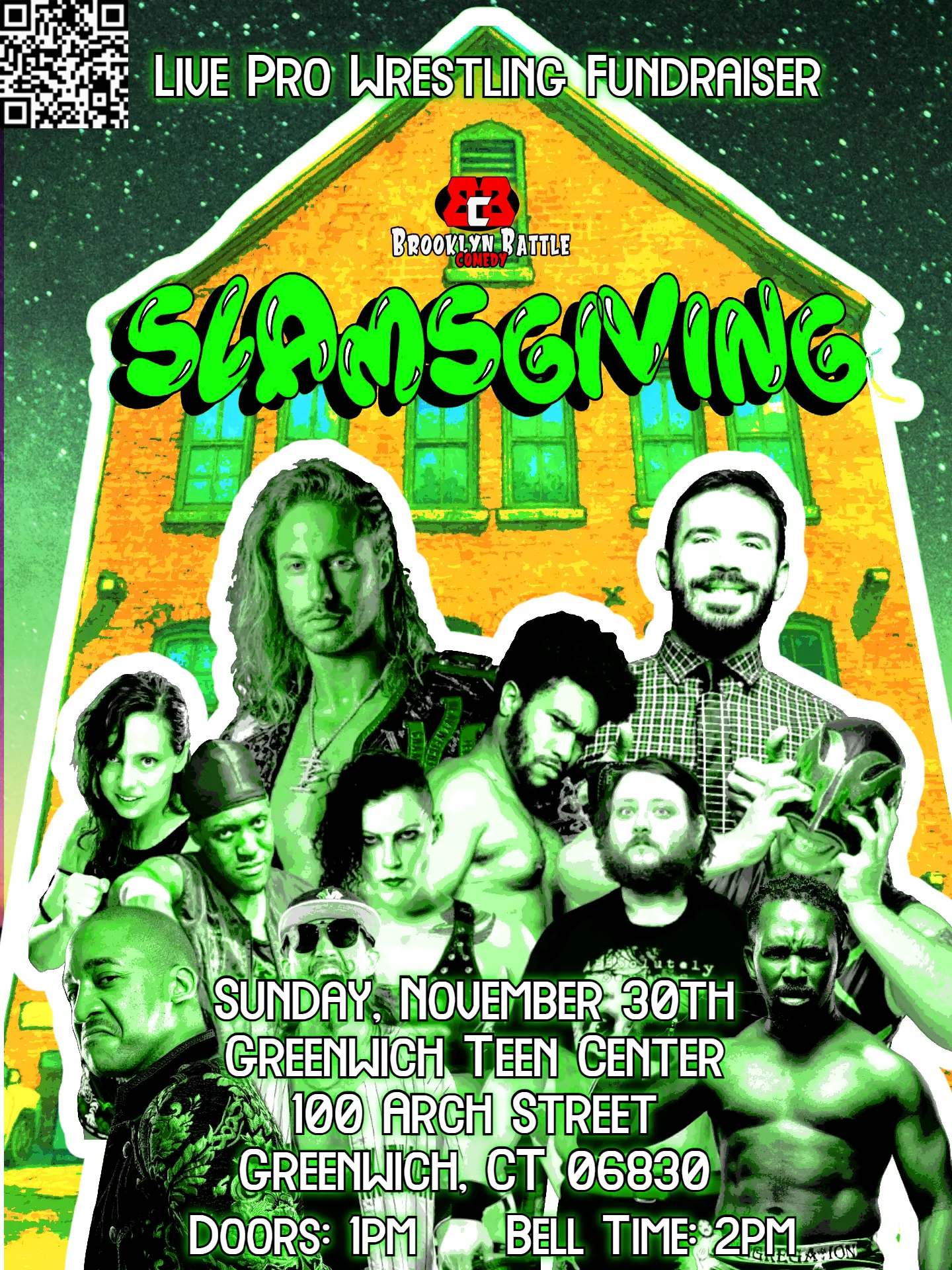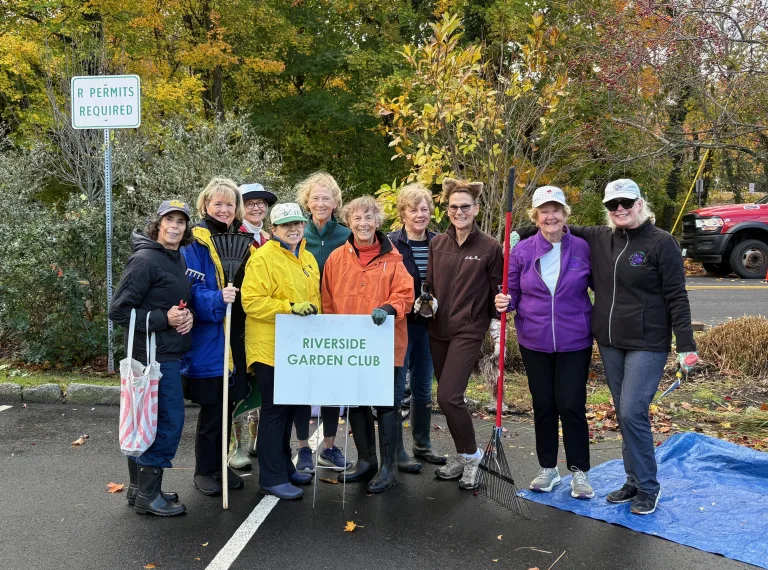
By Anne W. Semmes
On Sunday afternoon there were some 65 viewers of a prize-winning documentary film, “Beyond the Trees” in the Bruce Museum’s Auditorium. The film addressed the critical need for restoring private-owned forests for climate action, and featured Californian Laurie Wayburn, co-founder and president of the Pacific Forest Trust (PFT), who was present. Since PFT’s founding in 1993, Wayburn has overseen the conservation of more than 350,000 acres of forestland in California, Oregon, and Washington.
[Note that 73-percent of Connecticut’s forest land is privately owned.]
Wayburn comes with conservation genes inherited from her late father Edgar Arthur Wayburn, long serving president of the Sierra Club, who received a Presidential Medal of Freedom for his role in the creation of the Golden Gate National Recreation Area, and the creation and subsequent expansion of Redwood National Park.
Present with Laurie Wayburn was Tom Butcher representing the New York-based VanEck investment firm as its ESG director. The documentary describes how a partnership with PFT and VanEck has pioneered a “powerful solution to climate change and biodiversity loss worldwide.”
The film begins, “The beauty and benefits of a standing forest are irreplaceable. However, we are seeing these forests disappear right before our eyes. The climate crisis and loss of biodiversity are the two most significant threats to the health of our planet. Both are linked to the loss of forests, and we are not working fast enough to turn the situation around.”
Working Forest Conservation Easement
“But one organization has spearheaded a radical new approach,” the voice continued, “Pacific Forest Trust, a nonprofit organization that saw a way to align the natural powers of forests with the undeniable power of finance working with local communities and landowners.”
So, it was in the 1960’s that New York investor Fred van Eyck, a tree lover, purchased 9000-plus acres of forests in Northern California and Oregon. He would meet up with Laurie Wayburn in 1997 leading to his conserving his forests in a new forest management plan entitled Working Forest Conservation Easement.
“The loss and depletion of forests is the second largest source of CO2 emissions globally,” narrated Wayburn. “The kind of ecological forestry that we’re doing, the conservation forestry rebuilds everything…Private forests are actually 60-percent of all the forests in the U.S.
It’s not the national forest, it’s not the national parks. The dominant forest type is privately owned.” And what was happening to those forests? They were becoming she said, “shopping malls…converted to vineyards…getting liquidated for all the timber that’s on them to pay the bills. Those are the ones that are at risk, and they’re all interwoven with public lands ownership.”
“So, if you think of the landscape as a quilt and those private lands are all the moth holes, that’s where you’re tearing it apart, you don’t have the forest ecosystem. So, what Pacific Forest Trust uniquely did was say, let’s reweave that landscape. Let’s reweave that quilt so that it is functioning as a whole.”
“The idea of working together to build back the forest space to appreciate the full value of forests both economically and ecologically was what really clicked with Fred,” Wayburn told. And “A conservation easement is a legal tool that gives the time and space to shift from thinking about the financial return of the forest over the next few years to the next century, and it pays for the time value of money to make that shift.”
“A conservation easement is a promise by a property owner. It’s legally binding for usually forever. You can do anything as a property owner to a property. But this will limit your activity in one form or another. And in return, often the easement includes some kind of guarantee or financial incentive, like maybe a payment to offset the lost revenue that a landowner might get if they don’t harvest their trees in a particular year. Once you’ve granted that on a property, it takes the pressure off to make money from it, and that was the protection effectively that was given to the forest by Fred Van Eck.”
And PFT is “one of the first organizations to pioneer the use of working forest conservation easements and essentially incentivizing landowners to do better forest management. … That’s now the national model for private forest land conservation to not just look at set asides but to look at how these forests are conserved.”

Carbon storing forests
And as “Carbon emissions are the number one contributor to climate change today, forests have the capacity to store this carbon, pulling it safely from the air and storing it for hundreds and thousands of years. The bigger the tree, the more carbon it contains.”
And “When we’re talking about storing carbon, there’s carbon stored in all the parts of the tree, and so the equations that we use take into account the branches and the bark as well.” And Each time we cut a tree, most of the carbon stored in that tree is released back into the atmosphere.”
“To clarify,” she added, “PFT still cuts trees, but they don’t clear cut entire forests. They look at the whole forest to determine which trees to cut based on what the forest needs for restoration and the landowner’s needs for sales.”
“We have been earning millions of dollars through timber and through carbon and at the same time we’ve doubled the amount of carbon that is stored both in the forest and then in these products too… What we’re doing on the Van Eck forests is we are repaying that debt and then we’re setting up a huge savings account.” Thus, “It’s possible to create a more livable world. It’s possible to address climate change. It is possible to bring back the biodiversity and PFT shows you how to do it.”
Toward the end of the film, Wayburn shared her early years of working for the United Nations Environment Program and having traveled to Kenya. “And what was really important about that,” she told, “I was raised in a family that was a conservation family…. So, I grew up in the national parks and the national forests and in the creating of wilderness areas. But being in Kenya, it was all about how people live.”
“What struck me” she said, “is that while I’m a deep advocate of parks and wilderness areas, the fact of the matter is we are a part of nature. And so, the core mission was how do we live better with nature? How can we align what we do to support the systems that support us?”
Wayburn had come away with “the passion to align our economic development with what natural systems already do for free,” she said. “So that was my great inspiration in having worked in Kenya, Nepal, and India, and throughout Latin America.”
In the following Q&A Wayburn was asked what were the different tree varieties of trees in the forest lands PFT has conserved? “We are in the United States, and we have the most diverse conifer forests in the world,” she told. “There’s one acre which is called a ‘miracle acre’ in northern California, with 16 different species of conifer, plus all of the hardwoods as well. The West coast is dominated by conifers. The East coast has more of the hardwood variety.”
“So, Douglas fir is second only to the coastal redwood in the amount of carbon it can store per year per acre.” And “The U.S. has the most productive forest types on earth, 12 times more productive than the tropical rainforest… And a last fun fact – the redwood doesn’t bear cones. It doesn’t have reproductive quality until it’s about 200 years old. So, talk about patience and abstinence!”
For more information about the Pacific Forest Trust, visit www.pacificforest.org





